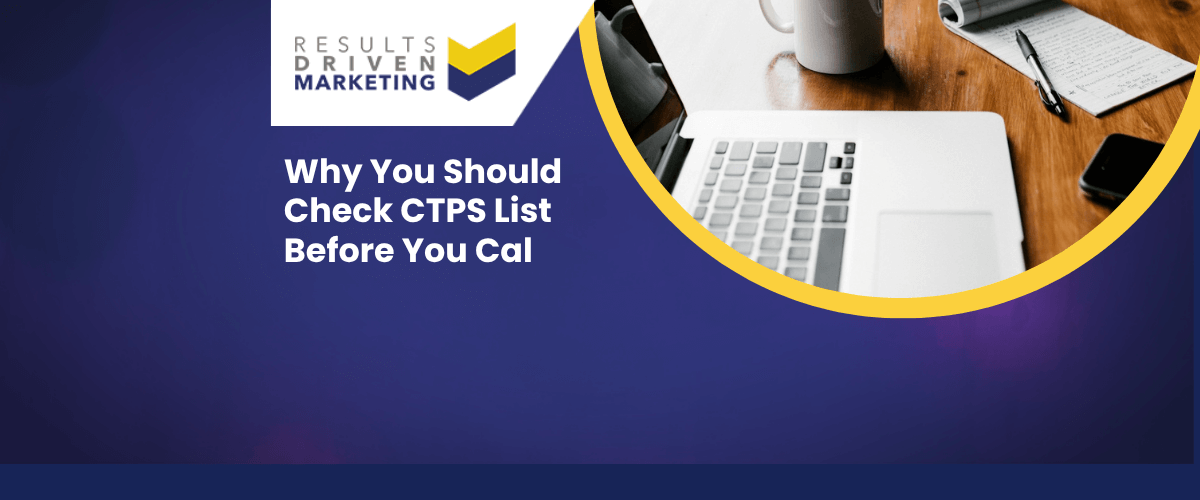
Email Marketing Checklist
An email marketing checklist is an essential tool for any marketer looking to execute successful email campaigns.
This article will delve into the critical components of an effective email marketing checklist, providing you with a step-by-step guide to ensure no detail is overlooked.
From crafting compelling content and designing eye-catching templates to segmenting audiences and analysing campaign data, our comprehensive checklist will help streamline your process and enhance your email marketing effectiveness.
Whether you’re a seasoned professional or new to the field, following these guidelines will help you optimise your email strategies and achieve better results.
Table of contents:
What is an Email marketing checklist?
An email marketing checklist is a comprehensive guide or set of steps used by marketers to ensure they cover all essential aspects of an email marketing campaign. This checklist is designed to streamline the process of creating, executing, and managing email marketing efforts, ensuring nothing important is overlooked.
The Advantages of Using an Email Marketing Checklist
The advantages of employing an email marketing checklist are manifold. Let’s delve into some of the key benefits:
- Streamlined Process: An email marketing checklist acts as a step-by-step guide, streamlining the entire process. It ensures that each campaign element is executed methodically, reducing the likelihood of errors or omissions.
- Consistency and Quality Control: By adhering to a checklist, marketers can maintain a consistent quality across all their email campaigns. This consistency is crucial in building and sustaining a brand’s reputation in the digital space.
- Enhanced Efficiency: Efficiency is the name of the game in today’s fast-paced marketing world. A checklist helps in organising tasks, saving valuable time and resources, and allowing marketers to focus on creativity and strategy.
- Data-Driven Decisions: A well-structured email marketing checklist emphasises the importance of data analysis. It encourages marketers to make informed decisions based on campaign metrics, leading to more effective and targeted email strategies.
- Goal Alignment: The checklist aligns every task with the overarching marketing goals, ensuring that each step contributes to the bigger picture of your marketing strategy.
The Disadvantages of Using an Email Marketing Checklist
While the benefits are significant, it’s also important to consider the potential disadvantages of relying solely on an email marketing checklist:
- Risk of Inflexibility: Strict adherence to a checklist can sometimes lead to inflexibility. The dynamic nature of digital marketing often requires on-the-fly adjustments, which might not be accommodated in a rigid checklist format.
- Over-Reliance on Structure: There’s a danger of becoming too reliant on the checklist, potentially stifling creativity. Sometimes, the most innovative email marketing ideas come from thinking outside the box, beyond the confines of a structured list.
- One-Size-Fits-All Pitfall: Not all email marketing campaigns are created equal. A generic checklist might not cater to the specific needs of different types of campaigns, audiences, or industries.
Is Using an Email Marketing Checklist a Good Idea?
When it comes to the realm of digital marketing, particularly email marketing, the question often arises: is using an email marketing checklist really a good idea? Well, let’s break it down. The effectiveness and practicality of an email marketing checklist are, frankly, quite remarkable. It’s like having a trusty co-pilot in the cockpit of your marketing strategy, ensuring you’re on course and not missing any crucial steps.
Think of it this way: an email marketing checklist is your blueprint for success. It lays out each step in your campaign, from crafting that eye-catching subject line to analyzing the open rates and click-throughs. It’s about ensuring that every email sent is not just a shot in the dark but a well-aimed arrow hitting the bullseye of your marketing targets.
Moreover, the practicality of such a checklist is undeniable. It’s a tool that brings order to the chaos, a guide in the often murky waters of email marketing. By following a checklist, you’re not just hoping for the best; you’re methodically working towards it. So, in a nutshell, yes, using an email marketing checklist is not just a good idea; it’s a cornerstone of smart marketing.
Key Considerations When Using an Email Marketing Checklist
Now, let’s pivot to some key considerations when using an email marketing checklist.
It’s not just about having a checklist; it’s about how you use it. Here are some vital factors to keep in mind:
- Customisation is Key: Remember, no two email campaigns are the same. Customize your checklist to fit the unique needs of each campaign.
- Flexibility: While it’s great to have a structured plan, be flexible. The digital marketing landscape is ever-changing, and your checklist should be adaptable.
- Audience Understanding: Your checklist should always include steps for understanding and segmenting your audience. After all, the right message needs to reach the right people.
- Testing and Optimisation: Include steps for A/B testing and continuous optimisation. Your first draft might not be your best draft.
- Metrics Matter: Ensure your checklist has a strong focus on metrics and analysis. The numbers will tell you the story of your campaign’s success or areas for improvement.
Alternatives to Using an Email Marketing Checklist
While an email marketing checklist is a fantastic tool, it’s not the only instrument in the orchestra of marketing strategies.
There are alternatives that can harmonize with or even replace a traditional checklist. Let’s explore a few:
- Automated Marketing Platforms: These platforms come with built-in workflows and templates that can guide your campaign without the need for a separate checklist.
- AI-Powered Tools: Leveraging AI in email marketing can provide dynamic content optimiation, audience insights, and predictive analytics, reducing the need for a manual checklist.
- Collaborative Planning Tools: Tools like Trello or Asana allow for a more dynamic and collaborative approach to planning and executing email campaigns.
- Professional Consultation: Sometimes, bringing in a marketing consultant can provide tailored strategies and insights that go beyond what a standard checklist can offer.
Defining Your Audience and Goals
Diving into the world of email marketing without a clear map is like sailing a ship without a compass. That’s where your email marketing checklist begins – with defining your audience and goals.
It’s about knowing who you’re talking to and what you’re talking about. Let’s get into the nitty-gritty of it.
Define Your Goals
In the grand scheme of email marketing, setting your goals isn’t just important; it’s essential. It’s the foundation upon which your entire campaign is built. Whether it’s boosting sales, increasing web traffic, or enhancing customer engagement, your goals should be as clear as a bell.
They guide your content, design, and even the timing of your emails. Remember, a goalless campaign is like a rudderless ship – it’s going nowhere fast.
Know Your Audience
Now, let’s talk about knowing your audience. It’s like knowing the back of your hand – essential for success. Here are some techniques to get you there:
- Surveys and Feedback Forms: Directly ask your audience what they want. It’s straightforward and effective.
- Analyzing Engagement Data: Look at past emails. Which ones did they open? Which links did they click? This data is gold.
- Social Media Insights: Your audience’s social media behaviour can tell you a lot about their preferences and interests.
Segmenting and Personalising Your Email List
Once you’ve got your goals set and your audience figured out, it’s time to segment and personalize.
This is where your email marketing checklist becomes a game-changer.
Segment Your Email List
Segmentation is like organising your closet – it makes finding what you need much easier. Here are some strategies:
- Demographic Segmentation: Age, location, job title – these details can help tailor your message.
- Behavioural Segmentation: Based on their past interactions with your emails or website, you can segment your audience into different groups.
- Purchase History: Knowing what they’ve bought before can help you figure out what they might want next.
Personalise Your Emails
Personalisation is the secret sauce of email marketing. It’s what makes your emails feel like a one-on-one conversation rather than a shout into the void.
Here are some tips:
- Use Their Name: It’s simple but effective. A “Hello, [Name]” can go a long way.
- Tailored Content: Based on their interests and past behaviour, customise the content to resonate with each segment.
- Personalised Recommendations: Suggest products or services based on their past purchases or browsing behaviour.
Crafting Your Email Content
Alright, let’s roll up our sleeves and dive into the heart of your email marketing checklist – crafting your email content. This is where you turn words into gold, or at least into clicks and conversions.
It’s all about creating content that resonates, engages, and ultimately drives action.
Craft Your Message
Developing compelling email messages is an art form. It’s about striking the right chord with your audience. Here’s a bit of guidance:
- Focus on Value: Your message should scream (politely, of course), “Hey, this is why you need to read this!”
- Keep it Clear and Concise: In the world of email, less is often more. Get to the point, and fast.
- Storytelling: Everyone loves a good story. Use narratives to connect with your audience on a deeper level.
Writing Engaging Subject Lines
The subject line is your email’s first impression, and we all know you never get a second chance at a first impression.
Here are some techniques to make it count:
- Curiosity Works Wonders: Pique their interest without giving it all away.
- Personalisation: Again, using their name or referencing their interests can work wonders.
- Urgency and Scarcity: Phrases like “Limited time offer” can create a sense of urgency.
Designing Mobile-Friendly Emails
In today’s world, if your emails aren’t mobile-friendly, you’re missing out. Big time. Here are the best practices for creating responsive email designs:
- Simplicity is Key: Keep your design clean and straightforward.
- Responsive Templates: Use templates that adapt to different screen sizes.
- Test on Multiple Devices: Ensure your email looks good on all devices, from smartphones to tablets.
Testing and Optimising Your Emails
Now, let’s talk about refining your masterpiece – testing and optimising your emails.
This part of your email marketing checklist is all about fine-tuning and making your emails the best they can be.
Test Your Emails
Testing your emails is like taking them for a test drive. You want to make sure everything runs smoothly. Here are some methods:
- A/B Testing: Test different elements like subject lines, content, and call-to-actions to see what works best.
- Send Time Optimisation: Experiment with different sending times to maximise open rates.
- Email Previews: Use tools to preview how your email will look in different email clients.
Monitor Your Performance
What’s the point of sending emails if you don’t know how they’re performing? Here’s how to keep track:
- Open and Click-Through Rates: These are your bread and butter. Monitor them closely.
- Bounce Rates: Keep an eye on these to clean your email list regularly.
- Subscriber Feedback: Sometimes, the best way to improve is to ask your audience directly.
Optimise for Better Results
The final step in your email marketing checklist is optimisation. It’s a continuous process of improvement. Here are some strategies:
- Iterate Based on Feedback: Use the data and feedback to make your next email even better.
- Segmentation and Personalisation: Continuously refine how you segment and personalise your emails.
- Stay Updated with Trends: Email marketing is always evolving. Stay on top of the latest trends and best practices.
Legal Compliance and Best Practices
Navigating the legal landscape of email marketing is a bit like walking a tightrope – it requires balance and attention to detail. Your email marketing checklist isn’t just about creativity and strategy; it’s also about staying on the right side of the law.
Stay Compliant with Laws
Understanding legal requirements in email marketing is crucial. It’s not just about being ethical; it’s about avoiding hefty fines and maintaining your brand’s reputation. Here’s the gist:
- Know the Laws: Familiarize yourself with regulations like CAN-SPAM, GDPR, and others relevant to your audience’s location.
- Consent is Key: Always ensure you have consent to send emails. No one likes unsolicited mail.
Adding an Unsubscribe Link
Including an unsubscribe link in your emails isn’t just a legal requirement; it’s also a best practice. Here’s why:
- Respect for the Recipient: It shows you respect their choice and value their inbox space.
- Cleaner Email List: It helps in maintaining a clean email list, filled with people who are genuinely interested in your content.
Launching and Monitoring the Campaign
Once your emails are compliant and ready to go, it’s time to launch and keep a close eye on them. This stage of your email marketing checklist is all about timing and analysis.
Send at the Right Time
Timing can be everything in email marketing. Sending your emails at the right time can significantly impact open rates. Here’s what you need to know:
- Test Different Times: Experiment with different sending times to see what works best for your audience.
- Consider Time Zones: If your audience is global, be mindful of different time zones.
Analyze and Adjust
Once your campaign is up and running, it’s time to analyze and adjust. This is where you fine-tune your strategy based on real data. Here’s how:
- Monitor Key Metrics: Keep an eye on open rates, click-through rates, and conversions.
- Be Ready to Pivot: If something isn’t working, don’t be afraid to change your approach.
FAQs
What is the Role of A/B Testing in Email Marketing?
A/B testing in email marketing is like having a crystal ball. It allows you to see which elements of your email resonate best with your audience, helping you refine your campaigns for better results.
How Important is Email Design in Campaign Success?
Email design plays a pivotal role in campaign success. It’s not just about looking pretty; it’s about creating an engaging and easy-to-navigate experience for your readers, which can significantly boost engagement and conversion rates.
What Are the Best Practices for Email Call-to-Actions?
Creating effective call-to-action buttons in emails is about clarity and persuasion. Use action-oriented language, make them visually striking, and place them strategically within your email for maximum impact.
How Can Email Marketing Influence Customer Loyalty?
Email marketing is a powerful tool in building and maintaining customer loyalty. It allows for personalised communication, and regular engagement, and provides value to your customers, fostering a strong, loyal relationship over time.
What Are the Challenges in Email List Segmentation?
Segmenting an email list can be tricky. Challenges include accurately categorizing subscribers, maintaining the segmentation over time, and continuously adapting it to changing customer behaviors and preferences.
How to Ensure Mobile Responsiveness in Emails?
Ensuring emails are effectively displayed on mobile devices involves using responsive design templates, keeping email content concise, and testing across different devices and email clients.
What Are the Key Metrics to Monitor in Email Marketing?
The key metrics to monitor in email marketing include open rates, click-through rates, conversion rates, bounce rates, and unsubscribe rates. These metrics provide valuable insights into the effectiveness of your campaigns and areas for improvement.
Who are we?
Dedicated to lead generation, Results Driven Marketing provides myriad services SMEs can trust to deliver results.
Our marketing lists are guaranteed accurate to industry high standards, and GDPR compliant and our experience team means that if you are looking to buy data, they make them totally bespoke and highly relevant whether you are looking for email lists, direct mailing lists or telemarketing lists.
Our email marketing software is highly rated. Responder provides the automation tools you need to put your marketing on autopilot.
We also supply email marketing solutions with our email marketing platform.
Call us today on 0191 406 6399 to discuss your specific needs.
Results Driven Marketing
info@rdmarketing.co.uk
0191 406 6399





